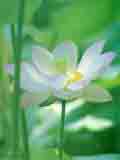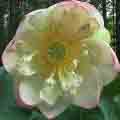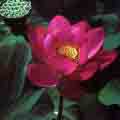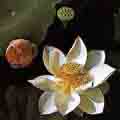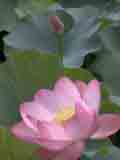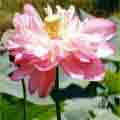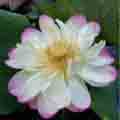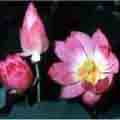Submitted by zhenliang on
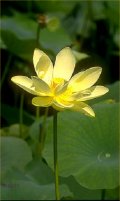
The entire plant is used medically by the Chinese. The plant is prescribed as an antidote for mushroom poisoning. The leaves are used in combination with other herbs to treat sunstroke, diarrhoea, dysentry, fever, dizziness and vomiting blood. Seeds are used as a tonic, for insomia and weakness in the kidney. The raw juice of the tubers are used to stop nose bleed, heat in the lungs and dry cough. The tubers when boiled is good for weakness in the digestive system. The fruit receptacle (recepticalum) is useful for blood in the urine. (Burn the receptacle into ash and dissolve the ash in water to drink.) The stamen stalks is of the same use, and as a tonic for diabetics. In fact the entire lotus plant parts can be obtained at most Chinese herbal medicine shops.
A water plant that grows in the mud. Flowers are showy, fragrant. Easy to plant in a large jug. The pink lotus is originally from China, now commonly found in the wild in Malaysia. Lord Buddha mentioned this flower many times in his teachings. The lotus is a sacred plant for both the Buddhists and the Hindus.
As upon the dirty mud, a sweet scented,
lovely lotus may grow and bloom.
Even so amongst worthless beings,
appears a wise and virtuous one.
Yatha sankaradhanasmim ujjhitasmim mahapathe
Padumam tattha jayetha sucigandham manoramam
Evam sankarabhutesu andhabhute puthujjane
Atirocati pannaya sammasambuddhasavako
Sakyamurni Buddha, Dhammapada No 58 & 59
Scientific name: Nelumbo nucifera Gaertn.
Common name: Lotus,
Chinese name: Lian
Thai name: Bua Luang
